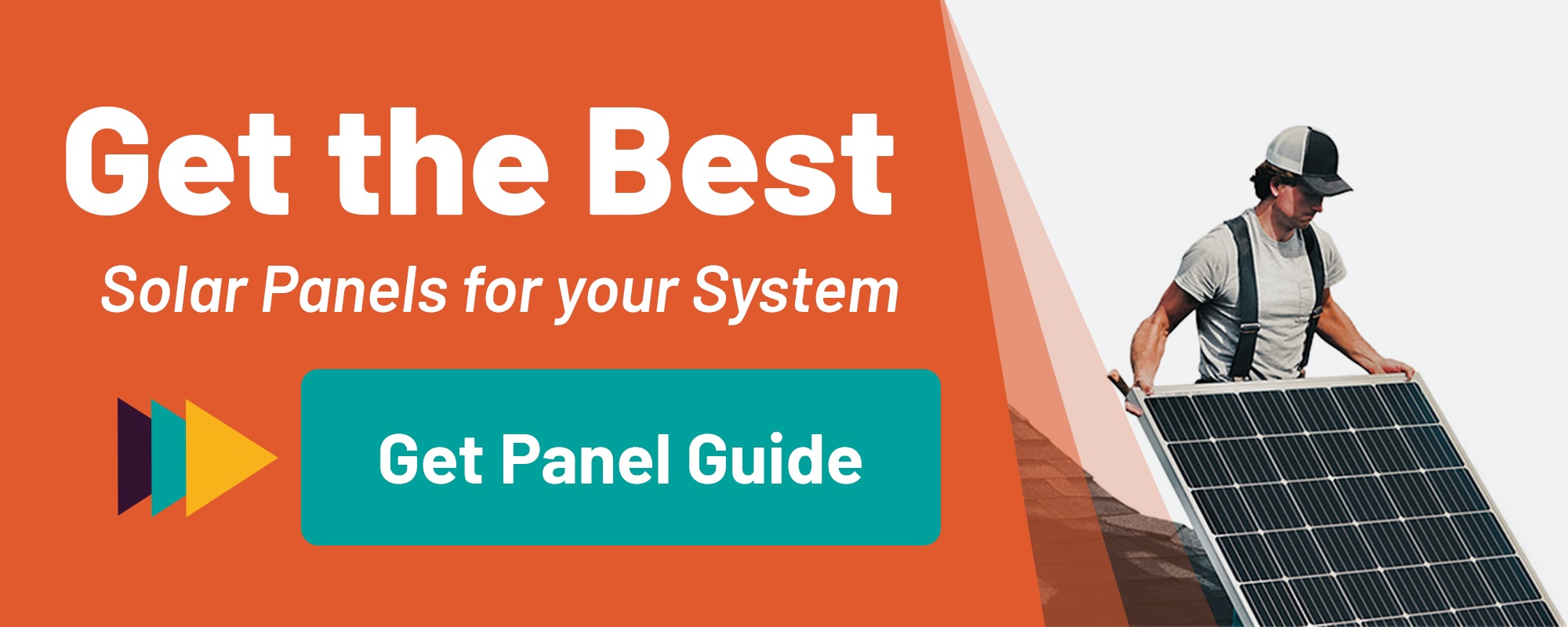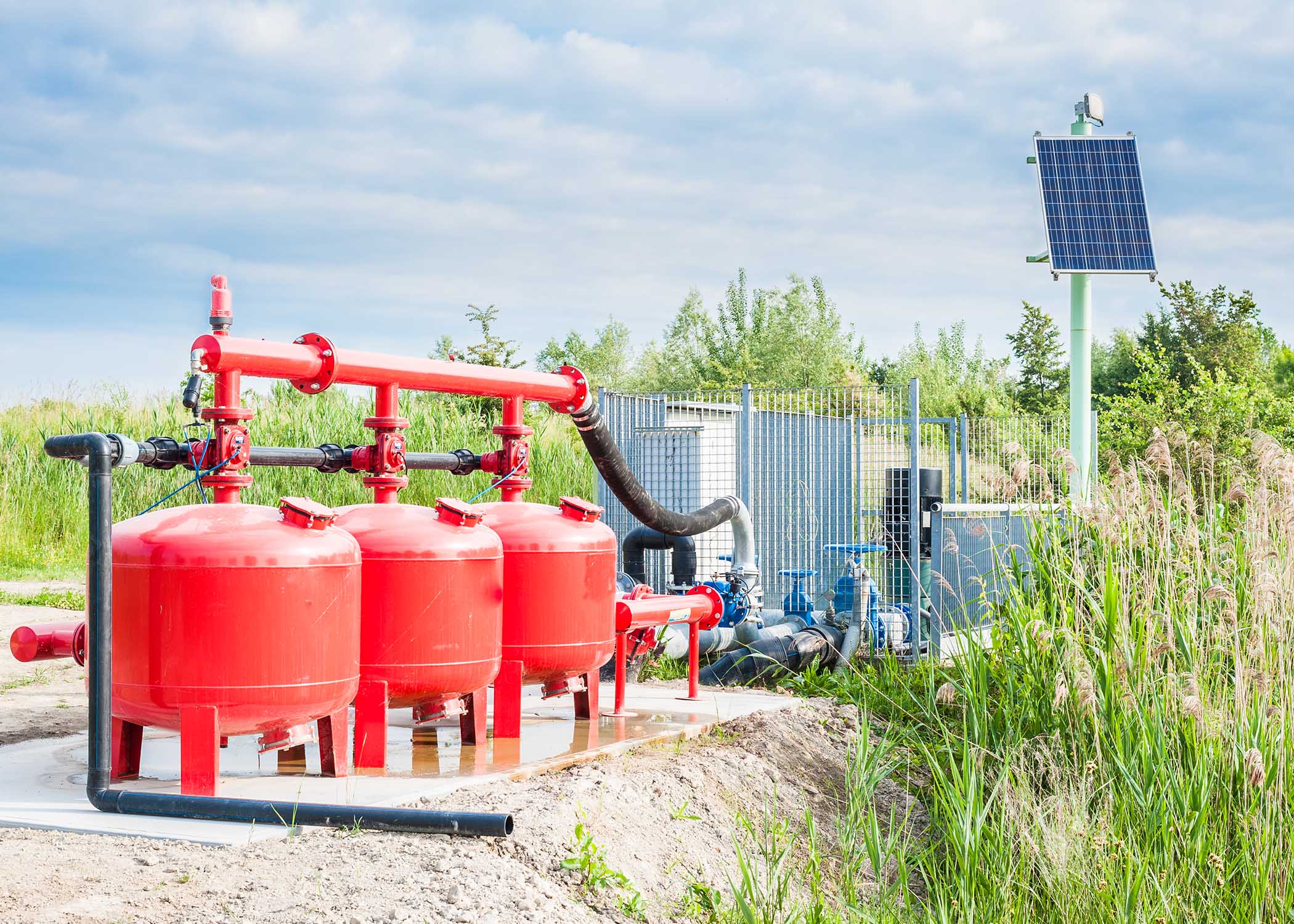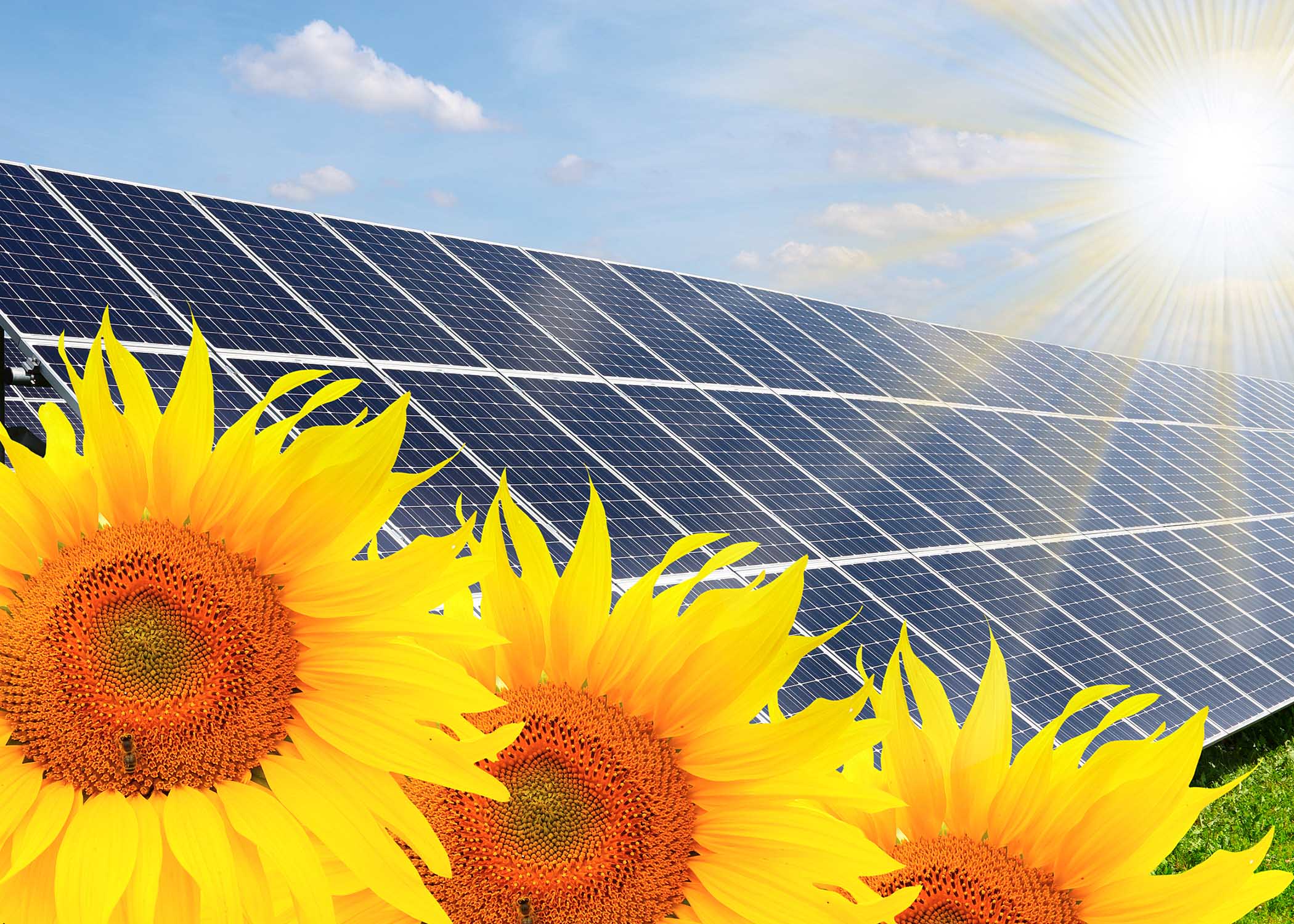What are the best solar panels on the market in 2021?
- Best budget solar panels: Astronergy 365W
- Best American solar panels: Heliene 320W
- Best premium solar panels: LG 375W
- Best RV/mobile solar panels: Sol-Go 115 W Flexible
- Best panels for remote power: Solarland 180W
How do you find the best solar panels for your system?
It’s not an exact science. “Best” will mean different things to different people.
You may care about efficiency and long lifespan. You might want to support American-made goods.
Or maybe you just want the most cost-effective option.
We’re going to put our two decades of system design experience to good use to bring you handpicked recommendations of the best solar panels on the market in 2021.
Before we go over our methodology, here’s a sneak peek at our best solar panel 2021 picks.
Best Budget Panels:
Best American Panels:
Best Premium Panels:
Best RV/mobile Panels:
Best Panels for Remote Applications:
How to Pick the Best Solar Panels for Your Project
There are a handful of factors that determine what the best solar panels are. Here are the main things you should look at when you research the best solar panels for your system.
Cost per watt
For most people, budget is the primary factor influencing decisions during the design process.
Panels come in all different sizes. Full-sized panels typically fall in the range of 275-400 watts, though there are also smaller panels for specialty off-grid applications.
The great equalizer is cost-per-watt. Divide the panel price by how many watts it outputs. You’ll get a “true” pricing number, which you can use to compare all panels on a level playing field.
Warranty
There are two different warranty categories – performance and workmanship.
The performance warranty guarantees your panels will work above their rated efficiency for the duration of the warranty. Most manufacturers promise their panels will work at or above 80% efficiency after 25 years.
25 years is the industry standard, but a few manufacturers offer longer performance warranties of 30 years.
Then there’s the workmanship warranty. This protects against manufacturing defects and other physical problems with your panels.
The workmanship warranty is shorter than the performance warranty. A generous workmanship warranty gives a great indication that the manufacturer knows they are putting out a reliable product.
The industry standard workmanship warranty is 10 years, with some companies offering 20-year guarantees.
Efficiency
A solar panel’s efficiency rating refers to the amount of sunlight the panel can convert into usable energy. 14-22% is an acceptable efficiency range for panels produced by major manufacturers.
This relates directly to the output of a solar panel (in watts). For example, a SolarWorld 290W panel is 17.3% efficient, while their 300W module is 17.89% efficient.

Temperature Coefficient
The best solar panels are tested in ideal conditions. When manufacturers measure panel output, they perform tests inside a climate-controlled factory.
Obviously, the real world is going to introduce less-than-ideal conditions. During those sweltering days in the dead of the California summer, your system will lag behind its rated efficiency.
The impact temperature has on true panel output is the temperature coefficient. The coefficient measures how much efficiency is lost for each degree above or below ideal test conditions.
We’ll give an example in Celsius, because that’s what most manufacturers measure: energy loss per 1°C temperature change.
For example, let’s say a panel was tested at 45° C, but its current temperature is 55° C. If the temperature coefficient is 0.4% Wp (Watt power), you can multiply that by the difference in temperature (10° C). That panel is operating 4% below its rated efficiency on that particular day.
There are separate temperature coefficients for voltage, amperage, and wattage. Certain types of solar panels like monocrystalline can perform slightly better at higher temperatures.
The temperature coefficient usually isn’t the most important variable to focus on unless you are in an area that gets extremely hot. This is because heat reduces the efficiency of your solar panels, making them operate at a reduced output.
Company History
The longevity and reputation of the panel manufacturer play a part in our recommendations. What good is a warranty if the company goes out of business before they get a chance to honor it?
For that reason, we look at companies with a stable track record in the solar industry. Every product on this list is produced by a major manufacturer that we don’t expect to disappear any time soon.
UL Listed
Underwriters Laboratories is an organization that has been around for over 100 years. UL sets standards and performs safety tests to ensure products are safe for public use.
Solar panels must be certified to UL 1703 standards if they are being installed on your home.
What are the best solar panels on the market in 2021?
Without further ado, here are the best solar panels you can buy in 2021 for a variety of applications.
Best Value Solar Panels: Astronergy 365W
- Cost: $257 (70 cents per watt)
- Workmanship warranty: 10 years
- Performance warranty: 25 years
- Efficiency: 18.9%
- Degradation: -0.7% / year
- Temperature coefficient: -0.376% Wp
- # of cells: 72
- Cell type: Mono PERC
Looking for the best affordable solar panels that won’t break the bank? Astronergy makes the best solar panels you can get from a pure value perspective.
Of the major module producers, Astronergy has the lowest cost-per-watt panels we’ve found. Their 365W panel retails at $257 (at the time of publication), which shakes out to 70 cents per watt.
A few of our employees run their home systems on Astronergy solar panels, and we also picked them for the system that powers the Unbound Solar® flagship office.
Their 17.7% efficiency is very respectable at this price point, and the warranty is on par with industry standards.
Astronergy also sets their warranty program apart from other companies by offering third-party insurance. Should they ever go out of business, the warranty would still be valid from the third-party provider.
That’s more for peace of mind than anything. Astronergy is a part of one of China’s largest electronics manufacturers. We expect them to be around for a long time to come.
But the extra bit of insurance on the warranty coupled with the low price point makes these the best value solar panels.
Best American-Made Solar Panels: Heliene 320W
- Cost: $256 (80 cents per watt)
- Workmanship warranty: 10 years
- Performance warranty: 25 years
- Efficiency: 19.26%
- Degradation: -0.7% / year
- Temperature coefficient: -0.38% Wp
- # of cells: 60
- Cell type: Mono
Among the American solar panel manufacturers, Heliene is our top pick. Based out of Sault Ste. Marie, Ontario, they assemble high-efficiency panels with factories in the USA and Canada.
With solar panels getting cheaper all the time, the price gap between imported and American-made panels has shrunk considerably. Imported 365W Astronergy panels now sell for 70 cents per watt, while American manufacturer Heliene sells 320W panels at 80 cents per watt.
Compare that to the premium LG panels featured in the next section, which go for $1.34 per watt.
Looking at the price distribution, Heliene’s place in the market is clear. Their prices are competitive with imported panels, and they also give the high-efficiency models a run for their money on output (while blowing them out of the water on the price tag).
If you want to pick up the best high-efficiency solar panels at a competitive price (and support American-made goods in the process), Heliene is the go-to choice. We recommend both their 320W (60-cell) and 365W (72-cell) panel.
Best Premium Solar Panels: LG 375W
- Cost: $513 ($1.36 per watt)
- Workmanship warranty: 25 years
- Performance warranty: 90.8% efficiency after 25 years
- Efficiency: 21.7%
- Degradation: -0.4% / year
- Temperature coefficient: -0.3% Wp
- # of cells: 60
- Cell type: Mono
LG doesn’t just make solar equipment; they’re one of the leading electronics manufacturers in the world.
We feature LG’s 375W panel in our premium packaged systems. They are super space-efficient, packing more output into a 60-cell panel than most 72-cell panels on the market are capable of producing.
Every solar project is different, and some people have the challenge of building a system in a compact space. For example, you may only have room for 10 panels on your roof. These LG panels will help you squeeze as much output as possible out of the limited space available to you.
They also have a long lifespan. At -0.4%/year, the degradation rate of these panels is 0.3% better than our featured Astronergy 365W panel.
That may not sound like a lot, but when you work the math out, it means LG panels will retain 7.5% more efficiency than Astronergy panels at the 25-year mark.
And LG’s solar panel warranties are a thing of beauty.
Where most companies aim for a 10-year workmanship warranty, LG covers the full 25 years.
On the performance warranty side, LG ensures their panels will still be 90% efficient after 25 years. That’s a stronger promise than the standard 80% after 25 years.
What are the best solar panels for off-grid systems?
We get this question a lot: is there any difference between the best solar panels for off-grid and grid-tie properties?
There is a bit of nuance to the answer.
The panels themselves can always work regardless of system type. There is no such thing as “off-grid panels” or “grid-tied panels” specifically.
However, panels must be paired with other components and sized accurately, especially in off-grid systems.
Historically, off-grid systems have used PWM charge controllers, which required that you match 12V solar panels with a 12V battery bank.
Now, most modern off-grid homes will use an MPPT charge controller, which can adjust the incoming PV voltage to work with almost any solar panel.
However, there are still string sizing considerations based on the panel and charge controller specs. All of the components must be supplied with the appropriate voltage and current. Batteries add another layer of complexity for off-grid systems, since the array must be sized to sufficiently recharge the batteries without overcharging them.
There are also a handful of best solar panels that are designed specifically for off-grid applications:
Best Solar Panels for RVs / Mobile Applications
Solar is also a great solution for mobile applications like RVs and boats. But you’ll need smaller panels to work around any space constraints.
The best solar panel for this situation is Sol-Go 115 watt flexible panels.
Their lower profile helps you find the right configuration with limited space available. And since these panels can bend up to 30 degrees, they can flex around curved surfaces to make the most of the space you have.
These panels are lightweight, easy to install and perform well in low light. They’re built to adapt to rough and changing conditions that come with living life on the road.
The last category we’ll look at is the best solar panels for small-scale remote applications.
These tend to be used to power remote equipment for a variety of industries:
- Lighting
- Telecommunication
- Security & surveillance
- Oil & gas
- Water pumping
- Traffic
- Utility monitoring
A lot of times this equipment is in a remote location (like at the top of a mountain or floating on a buoy in the middle of a lake) and you need a small, self-contained system to keep it running.
We would recommend both Solarland and Ameresco, depending on the application. A few examples:
- Solarland 180W panel – $335
- Ameresco 90W panel – $185
This represents the high end of the output range for 12-volt panels. Both companies offer a variety of 12V panel options ranging from 1W to 180W. Solarland also has 24V options, including one that goes up to 190W.
That’s it for our recommendations! We think these are the best solar panels you can get for your money in 2021, but prices and product configurations will change rapidly as technology improves.
As you do your research, seek out efficient panels from trusted manufacturers, and calculate the cost-per-watt so you can compare products on a level playing field.
If you follow these guidelines, you’re sure to find the best solar panels to power your system.
This article was updated on 11/30/2021. For our most current prices, take a look at the solar panels page in our shop.




